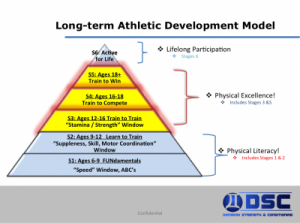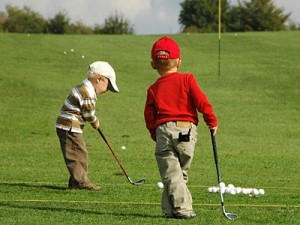Growing up we played sports to develop our fitness and athleticism. We weren't aware of LTAD, the risks of early specialization and the benefits of being a multi-sport athlete. We played football at school, swam competitively, rode our bikes in the summer and skied in the winter. And for the most part this worked pretty well based on the fact we pl...
Norwegian Alpine Ski Presentation
- Chris Collins
- Fitness
- 1715 Hits
- 0 Comments
-
Recently I had the opportunity to attend a presentation by Dr. Robert Reid of the Norwegian Alpine Ski Team. Dr. Reid had previously worked with the US Ski Team and presented 'A Day Without Training is a Day Without Meaning'.If you followed the Olympics this year you'll have noticed the success Norway had with skiing in North Korea. And a big part of this has to do with Norway's Long Term Athlete Development model. While Canada is considered a leader in this area there are still lessons to be learned by countries such as Norway. Below are some of my takeaways from this presentation.Isolation Leads To Stagnation - Dr. Reid emphasized the need for integration of different teams and practitioners. There is a synergy that comes from training as a team. Personally I know my own training, and competition, was better with others than alone. When someone is a specialist this is at the expense of being the best at lots of things. For example, the best dietitian in the world probably doesn't have a lot of tips to share with a sprinter on their mechanics. We need to work in groups, share, learn and get better together.Numbers Are Less Important Than Principles - In skiing you can measure how many gates someone did, how many ski days they had or even how many pairs of skis they own. What is more important is the big picture principles that last forever. Do no harm. Eat quality nutrition. Get enough sleep. Give your best effort. When you focus too much on the numbers you narrow it down too much and may exclude those that could become something great but haven't put up the numbers at a young age yet.Don't Shut Down Or Exclude Wild Ideas - Sometimes we know who geniuses are...
Why Your Kid Can't Train Like Crosby
- Chris Collins
- Fitness
- Training
- 1686 Hits
- 0 Comments
-
Have you been to a peewee or bantam hockey tournament lately? If so, you may have noticed something about the players. And that is the variation in sizes. You can have a situation where there is a 5'2" thirteen year old taking a face-off against a 6'2" player. Not only is the one player a foot taller than the other but he can also outweigh him by 50 lbs or more. Fast forward five years or so and these players could be much closer in size. And it's possible the smaller player could pass the other in size. Given all the variations in size that we see in young athletes it only makes sense that we train these athletes differently. But instead what we typically see is a one-size-fits-all program for all athletes. And the elements selected for this program may be based on what the best athlete is able to do with the hope this will spur the other athletes on to achieve the same. Worse there also instances where a coach tries to do what pro athletes in their sport do for training. How effective would it be for a 12 or 13 year old to try and replicate Sidney Crosby's off-season training program? Not only will not be the best option in the short term for this hockey player it also stunts the long term development of the player. Long Term Athlete Development, or LTAD, refers to training the right things at the right time for the athlete. There are 'windows' of training where it is more effective to train certain athletic abilities and skills than to simply do what the pros are doing. [caption id="attachment_4639" align="aligncenter" width="300"] LTAD - Training the right things at the right time. While having fun. For example, girls...


